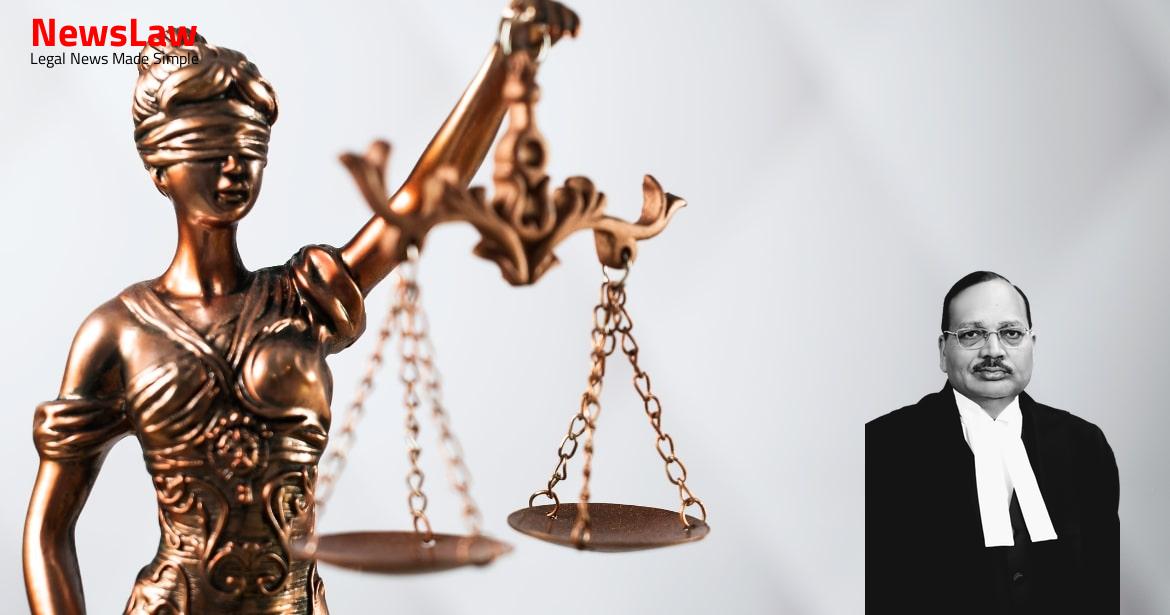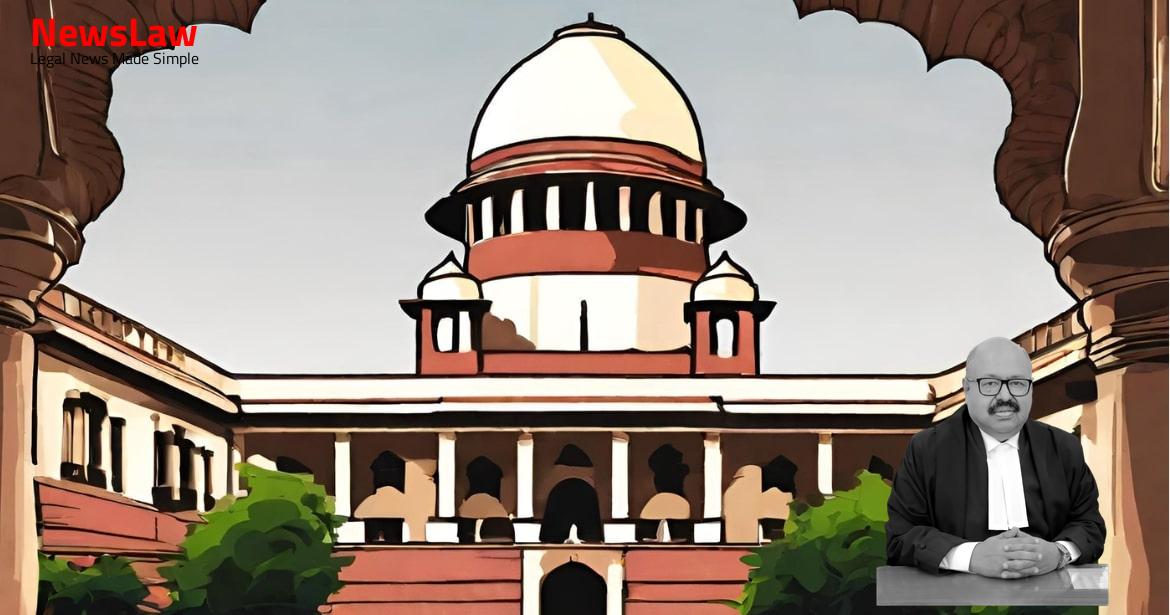Delve into the detailed legal analysis conducted by the court regarding the implementation of One Rank One Pension (OROP) policy. The summary focuses on the court’s scrutiny of OROP parameters, pension computation discrepancies, and the constitutional validity of policy choices. The evolving process of OROP adoption by the Union Government, financial implications, and implications of pension schemes are meticulously examined. Stay informed about the complexities surrounding OROP implementation by reading our brief analysis.
Facts
- The Committee recommended the implementation of OROP to bridge the gap between the rate of pension of current and past pensioners at periodic intervals.
- A Committee headed by Justice L. Narasimha Reddy was constituted to examine and make recommendations on the terms of reference received by the Union Government.
- The original definition of OROP was a uniform pension to be paid to armed forces personnel retiring in the same rank with the same length of service, irrespective of their date of retirement. Any future enhancements in the rates of pension were to be automatically passed on to past pensioners.
- The Finance Minister announced the allocation of Rs 500 crores to the Defence Pension Account to meet budgetary expenses for implementing OROP.
- Existing pension was to be revised upwards by implementing the basic pension drawn on 31 December 2015 by a multiplication factor of 2.57.
- The petitioners contended that revision of the definition of OROP from automatic revision to periodic intervals changed the accepted meaning of OROP, which may result in pension discrepancies between past and current pensioners.
- The petition under Article 32 of the Constitution challenged the implementation of OROP in its revised form as being arbitrary and violative of Articles 14 and 21 of the Constitution.
- A post-facto approval of the Union Cabinet for the implementation of OROP was received on 6 April 2016.
- The first respondent revised the definition of OROP to bridge the gap between the rates of pension of current and past pensioners at periodic intervals rather than automatically.
- MACP benefits form a significant portion of the retiring personnel in the specified ranks.
- Sepoys promoted to higher ranks are entitled to MACP upgradation for those ranks only.
- The OROP rates are based on the average pension of retirees in 2013, leading to disparity.
- Automatic revision of pensions for pre-2013 retirees is not feasible.
- The one man Committee report on OROP is still under review by the Government.
- Disparities in pension calculation for different classes of pensioners have been highlighted.
- The financial implications of implementing OROP have been outlined.
- Various anomalies and disparities in pension calculations under MACP and OROP have been discussed.
- The date of implementation of OROP was changed arbitrarily from 1 April 2014 to 1 July 2014.
- Differences in pension calculation methodologies for pre-2014 and post-2014 retirees have been pointed out.
- The financial implications and challenges of linking non-MACP personnel with MACP personnel under OROP have been presented.
- Various recommendations and decisions regarding pension calculations and OROP implementation have been critiqued.
- Key points of confusion and contention related to OROP and MACP schemes have been highlighted.
Also Read: Balancing Power and Transparency: Electoral Bonds Struck Down, Disclosure Mandated
Arguments
- The Union government implemented OROP as understood by the Koshyari Committee
- Mr. Huzefa Ahmadi, Senior Counsel for the petitioners, emphasized this point during the hearing
- Between 1957 and 1987, pensionary benefits were increased while provident fund benefits were not enhanced.
- The petitioners argue that the policy communication of 7 November 2015 contradicts the original decision to implement OROP.
Also Read: Recall of Resolution Plan Approval: Legal Analysis
Analysis
- The analysis of the judgment focuses on the OROP policy and its implementation by the Union Government.
- The policy decisions and discussions leading to the adoption of OROP are scrutinized, starting from the Koshyari Committee Report to the communication dated 7 November 2015.
- It is emphasized that while a decision in principle was made to implement OROP, the specifics of its implementation were still being worked out.
- The analysis elaborates on the parameters of OROP, such as uniform pension for personnel retiring in the same rank with the same length of service, and the automatic passing on of pension enhancements to past pensioners.
- The doctrine of legitimate expectations and the role of policy choices by the Union Government in determining OROP modalities are discussed.
- The discrepancies in pension payments to personnel of the same rank but retiring before and after 2014 are addressed, along with the implications of the MACP and ACP schemes on pension calculations.
- The constitutionality of the OROP principle as defined in the communication dated 7 November 2015 is evaluated based on constitutional parameters and the role of judicial review.
- The Union Government’s budget allocations for defense pensions and the financial implications of various OROP policy choices are outlined.
- The summary concludes by highlighting that the implementation of OROP was an evolving process within the government, leading to the formal adoption of the policy on 7 November 2015.
- The issue addressed in this part of the judgment is related to pension computation and eligibility criteria.
- The case of Krishena Kumar was discussed, where the cut-off date for pension eligibility was deemed not arbitrary.
- The relation between pension and emoluments prior to retirement was highlighted.
- The decision in Nakara was referred to in various instances to establish precedents.
- The importance of considering different categories of pensioners such as family pensioners and disabled pensioners was emphasized.
- The principles related to pension as summarized in the case of Col. B.J. Akkara (Retd.) v. Government of India were discussed.
- Anomaly regarding pension disparity between Major Generals and Brigadiers was addressed in the case of SPS Vains.
- The concept of legitimate expectations and promissory estoppel in relation to pension schemes were elucidated.
- The role of policy decisions and executive discretion in pension matters was highlighted.
- The judgment emphasized the need for elected representatives to address complex policy issues related to pensions.
Decision
- A re-fixation exercise to be carried out from 1 July 2019 after the expiry of five years.
- Arrears payable to all eligible armed forces pensioners to be computed and paid within three months.
- The petition is disposed of based on the above terms.
- Pending applications to be disposed of.
- Pension re-fixation to occur every five years as per a communication dated 7 November 2015.
Case Title: INDIAN EX SERVICEMEN MOVEMENT (AN ALL INDIA FEDERATION OF MILITARY VETERANS ORGANISATION REPRESENTED Vs. UNION OF INDIA DEPARTMENT OF EXSERVICEMEN WELFARE MINISTRY OF DEFENCE SECRETARY (2022 INSC 315)
Case Number: W.P.(C) No.-000419-000419 / 2016



